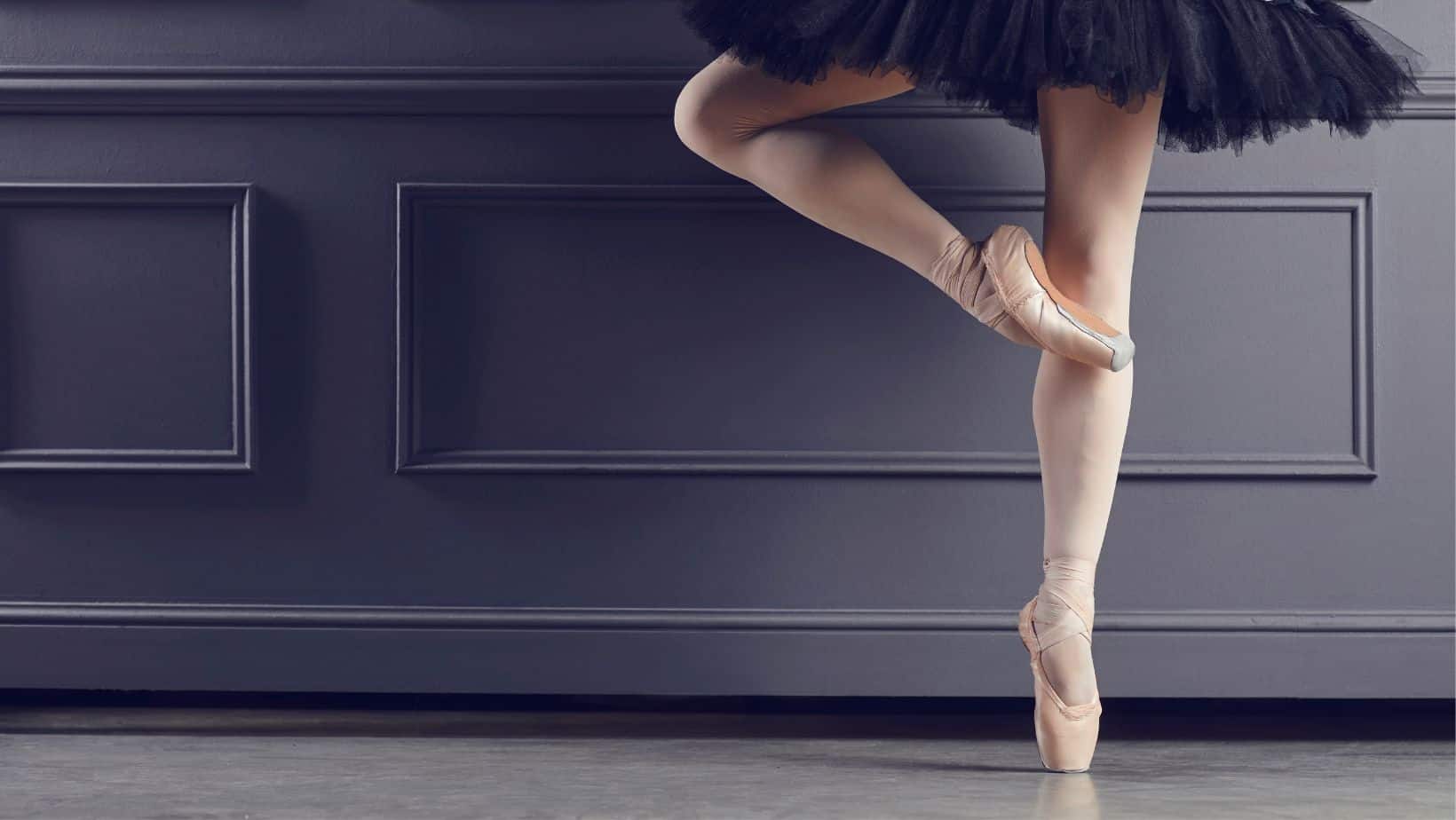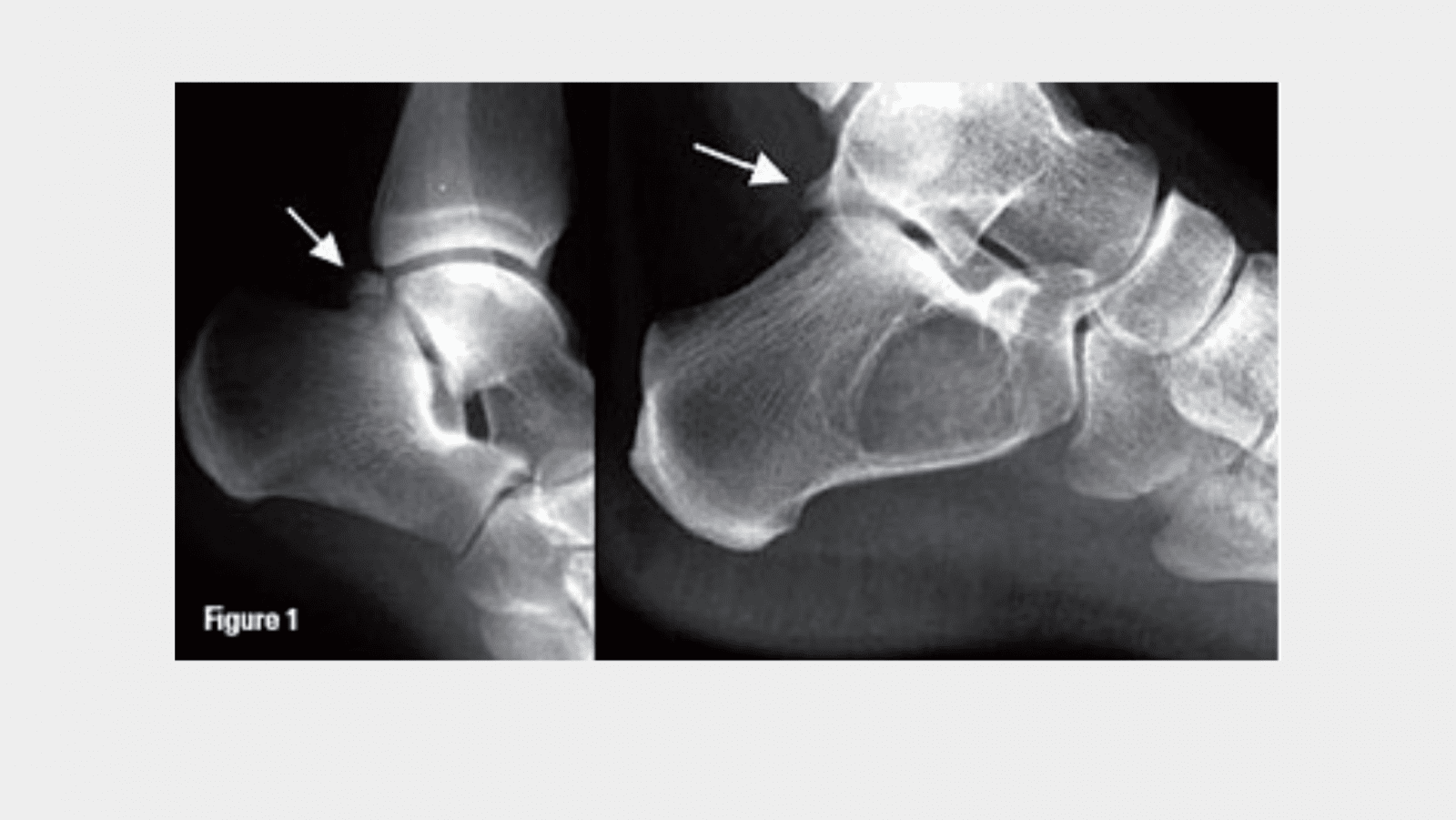Flexor Hallucis Longus
Read More >
Dancers Heel is also known as a Posterior Ankle Impingement, which causes pain and swelling in the back of the ankle joint for dancers.
The ankle joint consists of 3 bones: the Talus bone, the Tibia and the Fibula. During childhood, the Talus bone may not fully form, and this can lead to an additional bone or fibrocartilage at the back of the ankle. This additional bone is called an Os-trigonum and if this bone is repeatedly compressed through motions such as going en-pointe, it can lead to a painful dancer’s heel.
In other cases, a bony growth may occur from the talus bone, called a Stieda Process, and this can compress soft tissues such as the Flexor Hallucis Longus or on other bones in the ankle during jumping and pointe exercises, leading to a dancer’s heel.
Dancer’s heel causes pain and swelling at the back of the ankle joint, especially in positions such as pointing your toes downward (plantarflexion), en-pointe and jumping.
Patients often experience sharp pain in the back of the ankle due to compression of soft tissue, while severe symptoms may lead to a dull ache at rest.
Lifting your feet upwards (dorsiflexion) should relieve the symptoms of Dancer’s heel.

Repetitive heel raises (pointe work), especially in the early years of life, can lead to an additional bony growth on the talus bone. This is referred to as a “Stieda process“.
This extra bone growth combined with repetitive demi-pointe and pointe can cause a build-up of inflammation and pain in the back of the ankle.
The formation of an extra bone at the back of the ankle is known as an Os Trigonum. During the teenage years, the talus bone should complete its formation, but in 7-14% of people, it does not complete this process leaving an additional piece of bone in the back of the ankle joint. This can then be pinched in a demi-pointe or point position, causing Dancer’s heel pain.
Finally, a sudden increase in the amount of pointe when training can cause mechanical heel irritation of the soft tissues that pass through the back of the ankle such as the Flexor Hallucis Longus.
You should see a medical professional, such as a Physical Therapist, if you are experiencing any heel pain.
A Physical Therapy appointment will include clinical tests such as a posterior ankle impingement test to establish a clinical diagnosis of Dancers Heel.
The Posterior Ankle Impingement test involves the patient lying on their front with their knee bent to 90º. The foot is placed into terminal plantarflexion; pain provocation is a sign of a positive test.
An MRI is the most accurate form of imaging for a Dancer’s Heel as it can identify any bony growths, an Os Trigonum, or joint effusion.
A simple lateral view X-ray can be very helpful for diagnosing a Stieda process or an Os Trigonum, and it is much more cost-effective than an MRI.

Physical Therapy is the most effective form of treatment for Dancers Heel. Exercise Modification is often recommended, including reducing the amount of time on demi-pointe and pointe work to help reduce pain and inflammation.
Manual therapy such as massage and ankle mobalisations to gap the ankle joint can provide pain relief.
Icing can help reduce the pain and inflammation in the area, which may be applied in addition to taking non-steroidal anti-inflammatory medication.
Strengthening and stretching exercises, initially with a band and progressing into weight-bearing, are excellent at strengthening the ankle joint and reducing the amount of load that goes through the joint.
Custom Insoles may be recommended to address any biomechanical issues.
Poor foot control when walking can contribute to the irritation of your heel pain, and insoles help to address this.
A Cortisone injection is a form of steroidal anti-inflammatory injection into the back of the heel.
The injection helps to reduce inflammation levels in the ankle joint, and it can be used alongside Physical Therapy.
Surgery can be helpful for an Os Trigonum or a Stieda Process.
Surgery is usually an arthroscopic removal of the extra bone formation. It may be followed by 1-2 weeks in a boot and 4-6 weeks of Physical Therapy.
This is not medical advice, and we recommend a consultation with a medical professional such as James McCormack to achieve a diagnosis. He offers Online Physiotherapy Appointments weekly.
Do Dancers get heel spurs?
It is common for Dancers to get bony spurs on the talus bone. This can lead to a Posterior Ankle impingement at the back of the ankle. However, dancers are no more likely to have a common heel spur on the underside of the foot than anyone else.
Why Do Dancers put their feet in ice water?
Dancers put their feet in ice water as a form of pain relief alongside its anti-inflammatory properties. Dancers spend a lot of active time on their feet which can lead to significant pain and discomfort so putting their feet in ice water can help with their recovery.